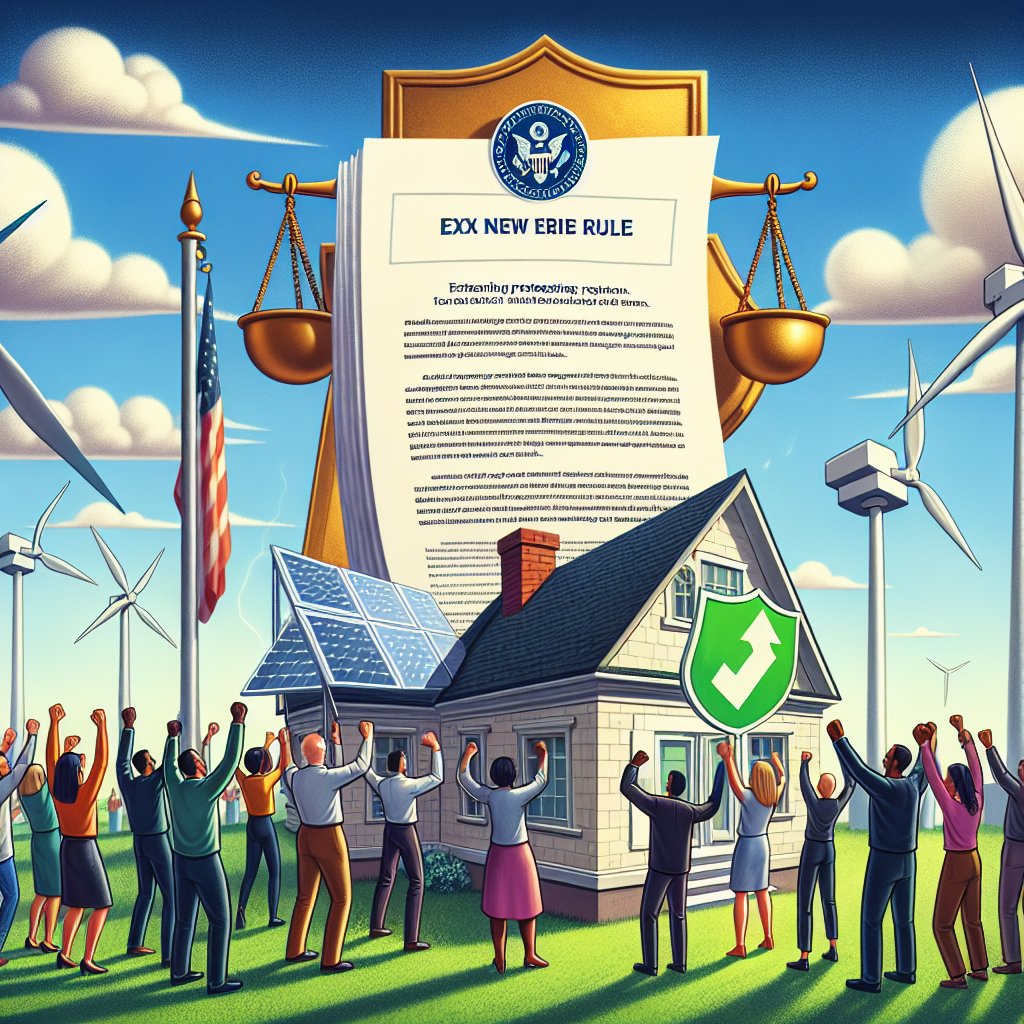New CFPB Rule Extends Mortgage Protections to Clean Energy Loans
In a significant move towards promoting sustainable energy solutions, the Consumer Financial Protection Bureau (CFPB) has introduced a new rule that extends mortgage protections to clean energy loans. This development is poised to reshape the landscape of home financing, making it easier for homeowners to invest in energy-efficient upgrades. This article delves into the implications of this rule, its potential benefits, and the challenges it may present.
Understanding the New CFPB Rule
The CFPB’s new rule aims to integrate clean energy loans, often referred to as Property Assessed Clean Energy (PACE) loans, into the existing framework of mortgage protections. Traditionally, PACE loans have been used to finance energy-efficient home improvements, such as solar panels, insulation, and energy-efficient windows. However, these loans have been criticized for their lack of consumer protections, leading to financial strain for some homeowners.
Under the new rule, PACE loans will now be subject to the same consumer protection standards as traditional mortgages. This includes:
- Clear disclosure of loan terms and conditions
- Assessment of a borrower’s ability to repay
- Protections against predatory lending practices
Benefits of the Rule
The extension of mortgage protections to clean energy loans offers several advantages:
- Increased Transparency: Homeowners will have a clearer understanding of the terms and conditions of their loans, reducing the risk of unexpected financial burdens.
- Enhanced Consumer Confidence: With added protections, more homeowners may be encouraged to invest in energy-efficient upgrades, knowing they are safeguarded against unfair lending practices.
- Promotion of Sustainable Practices: By making clean energy loans more accessible and secure, the rule supports the broader goal of reducing carbon footprints and promoting environmental sustainability.
Challenges and Considerations
While the new rule presents numerous benefits, it also poses certain challenges:
- Implementation Complexity: Integrating PACE loans into the existing mortgage framework may require significant adjustments from lenders and financial institutions.
- Potential for Increased Costs: The added consumer protections could lead to higher administrative costs, which might be passed on to borrowers in the form of higher interest rates or fees.
- Regulatory Compliance: Lenders will need to ensure compliance with the new regulations, which could involve extensive training and system updates.
Case Studies and Examples
Several states have already implemented similar protections for PACE loans, providing valuable insights into the potential impact of the CFPB’s rule. For instance, California, a pioneer in clean energy financing, has seen a significant increase in the adoption of energy-efficient home improvements since implementing stricter consumer protections. Homeowners in the state have reported greater satisfaction with their financing options, leading to a more robust market for sustainable home upgrades.
Conclusion
The CFPB’s new rule extending mortgage protections to clean energy loans marks a pivotal step in promoting sustainable home improvements. By ensuring transparency, enhancing consumer confidence, and supporting environmental goals, the rule has the potential to drive significant growth in the clean energy sector. However, stakeholders must navigate the challenges of implementation and compliance to fully realize these benefits. As the rule takes effect, it will be crucial to monitor its impact on both the financial and environmental landscapes, ensuring that it delivers on its promise of a more sustainable future.



